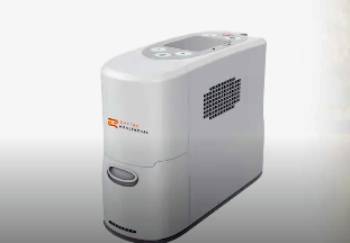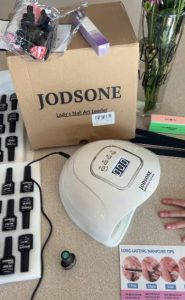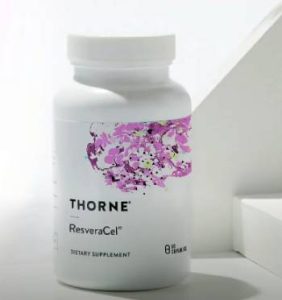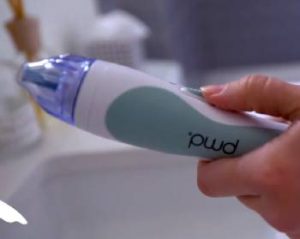Finding the right portable oxygen concentrator can be overwhelming, especially with so many options on the market. The Rhythm P2 Portable Oxygen Concentrator is a lightweight and compact device designed for convenience, but after researching user experiences, it’s clear that this model may not be the best investment.
While it offers a five-hour battery life on its lowest setting and meets FAA travel requirements, several downsides make it less appealing compared to other brands. If you’re looking for a long-term, reliable oxygen solution, there are better alternatives worth considering.
What Is the Rhythm P2 Portable Oxygen Concentrator?

The Rhythm P2 Portable Oxygen Concentrator is designed to provide supplemental oxygen for individuals who need respiratory support while on the go. Weighing just 4.37 pounds, it is relatively compact and lightweight compared to some traditional oxygen concentrators, making it easier to carry around for daily activities or travel.
It features five pulse flow settings, allowing users to adjust oxygen delivery based on their specific needs. With an oxygen concentration level of 87% to 96%, the device ensures a steady supply of oxygen, comparable to what other leading brands offer.
One of its notable features is its rechargeable battery, which the manufacturer claims can last up to five hours on the lowest setting. However, several user reviews suggest that the actual battery performance may fall short of expectations, with some reporting that it does not last even one full hour.
The device includes an LCD display for easy operation and comes with both AC and DC chargers, allowing it to be powered at home or in a vehicle. Additionally, it is FAA-approved for air travel, making it a potential option for frequent travelers who require oxygen therapy.
Despite its seemingly strong specifications, the Rhythm P2 has received mixed reviews, particularly regarding its noise level, durability, and battery reliability. Some users find it too loud for comfortable use in quiet environments, while others report issues with overheating and battery malfunctions. While it may be a portable option for occasional use, it lacks the dependability that many users expect from a medical-grade oxygen concentrator.
Maintenance and Getting the Most Out of the Rhythm P2
If you already own the Rhythm P2, proper maintenance is essential to keep it running as efficiently as possible. Here are some tips to extend its lifespan and improve performance:
- Clean the air intake vents regularly to prevent dust buildup, which can affect performance.
- Store the device in a cool, dry place when not in use to minimize overheating.
- Charge the battery fully before using it to help maintain its longevity.
- Replace filters as needed to ensure a steady flow of clean oxygen.
- Avoid overloading the device by using it only as directed, as pushing it beyond its limits may shorten its lifespan.
Despite following these best practices, users still report frequent issues, which suggests that even proper maintenance may not be enough to keep the Rhythm P2 functioning optimally in the long run.
Should You Buy the Rhythm P2 Portable Oxygen Concentrator?

The Rhythm P2 Portable Oxygen Concentrator may seem like a convenient choice at first glance, but after analyzing user feedback and comparing it to other brands, it’s hard to recommend. While it does have some positives—such as being lightweight, compact, and FAA-approved—there are several major drawbacks that overshadow these benefits.
One of the biggest issues is battery life. Although the manufacturer claims up to five hours on the lowest setting, many users report significantly less runtime, with some experiencing battery failure after just a few uses. If you need a reliable oxygen concentrator for travel or extended outings, this limitation can be frustrating and inconvenient.
Another common complaint is the excessive noise level. Many users have noted that the Rhythm P2 is noticeably louder than other portable oxygen concentrators, making it difficult to use discreetly in public places. Additionally, concerns about durability have surfaced, with reports of malfunctions and the need for replacement batteries within a short period. Some users also find it heavier than expected, making portability less convenient than advertised.
Ultimately, if you’re looking for a high-quality, dependable oxygen concentrator, there are better alternatives. Brands like Inogen and Philips Respironics offer more reliable options with longer battery life, quieter operation, and better long-term performance. While the Rhythm P2 might work in a pinch, its shortcomings make it a risky investment for those who rely on supplemental oxygen daily. Choosing a more trusted brand will likely save you money and frustration in the long run.
Pros and Cons of the Rhythm P2 Portable Oxygen Concentrator

Pros:
- Lightweight and compact: At just 4.37 pounds, the Rhythm P2 is easier to carry compared to many home-based oxygen concentrators, making it suitable for travel or daily outings.
- FAA-approved for air travel: This device meets airline travel regulations, allowing users to bring it on flights without restrictions.
- Multiple flow settings: Offers five pulse flow settings, giving users some flexibility in adjusting oxygen levels based on their needs.
- Rechargeable battery option: The battery can be charged while the device is in use, and an extra battery can be purchased for extended usage.
- AC and DC power compatibility: Can be charged via a standard wall outlet or a car charger, adding convenience for users on the go.
- Simple operation: The easy-to-read LCD screen and straightforward controls make it user-friendly, even for those unfamiliar with portable concentrators.
Cons:
- Short battery life: While advertised to last up to five hours on the lowest setting, many users report significantly shorter battery performance, often under an hour.
- Noisy operation: Some users find the device too loud, making it uncomfortable for use in quiet environments like bedrooms, offices, or public spaces.
- Durability concerns: Several reviews mention battery failures, overheating, and unexpected malfunctions, raising reliability issues.
- Slow oxygen delivery: Some users report a noticeable delay in oxygen output after turning the device on, which can be problematic in urgent situations.
- Limited oxygen output: With a pulse flow system instead of continuous flow, it may not be suitable for users who need a constant oxygen supply.
- Heat dissipation issues: The device can become warm after prolonged use, potentially causing discomfort or safety concerns.
- Not Medicare-preferred: Some users claim that Medicare prioritizes lower-cost devices over higher-quality ones, possibly impacting its reliability and performance.
Also Read: My Experience With Boost Oxygen
Rhythm P2 Portable Oxygen Concentrator Vs. Other Leading Brands
- Rhythm P2 Vs. Inogen One G5
The Inogen One G5 is often considered the gold standard for portable oxygen concentrators. It weighs less than the Rhythm P2 and operates much more quietly. Additionally, the battery life is significantly better, with up to 13 hours of runtime using an extended battery. If you need a reliable, long-lasting oxygen concentrator, the Inogen One G5 is the better choice.
- Rhythm P2 Vs. Philips Respironics SimplyGo Mini
The SimplyGo Mini from Philips Respironics offers a more user-friendly experience with a sleek design, quieter operation, and a long-lasting battery. While it’s slightly heavier than the Rhythm P2, users report that it’s more durable and delivers oxygen more consistently. The extra weight is a fair trade-off for reliability and better performance.
- Rhythm P2 Vs. AirSep FreeStyle 3
The AirSep FreeStyle 3 is a solid alternative with a similar weight but fewer reported issues. Its battery life is comparable to the Rhythm P2, but it doesn’t suffer from the same overheating or durability problems. While not as feature-rich as some premium brands, it’s a more reliable option overall.
- Rhythm P2 Vs. Caire Freestyle Comfort
The Caire Freestyle Comfort is designed with user comfort in mind. It offers a curved, ergonomic design for easy carrying, and it’s quieter than the Rhythm P2. It also boasts better battery performance, making it a strong alternative for those who need consistent oxygen on the go.
- Rhythm P2 Vs. GCE Zen-O Lite
The GCE Zen-O Lite provides both pulse and continuous flow oxygen delivery, making it more versatile than the Rhythm P2. It is slightly heavier, but its durability and performance make it a better investment for long-term use. If flexibility is a priority, the Zen-O Lite outperforms the Rhythm P2 in nearly every way.
Also Read: My Thoughts On OxyFlow Breathing Trainer
Frequently Asked Questions (FAQs)
No, Inogen is widely regarded as a superior brand in terms of battery life, noise levels, and overall reliability. The Inogen One G5, for example, offers up to 13 hours of battery life with an extended battery, compared to the Rhythm P2’s much shorter runtime.
While the manufacturer claims up to five hours of battery life on the lowest setting, real-world use suggests that the battery may last significantly less, sometimes failing after just one hour or requiring frequent recharges.
Portable oxygen concentrators can be expensive, and battery life can be a limiting factor. Some models, like the Rhythm P2, are also noisier than expected, which can make them inconvenient for public use. Additionally, not all models provide a continuous flow option, which some users may require.
Yes, the Rhythm P2 is FAA-approved for air travel, meaning it can be used on airplanes. However, given the battery life concerns, it may not be the best option for long flights without access to charging.
Final Thoughts
While the Rhythm P2 may seem like an affordable and portable solution, its drawbacks outweigh its benefits. Issues with battery performance, noise, and reliability make it a less-than-ideal choice compared to more reputable brands.
If you’re in the market for a dependable portable oxygen concentrator, it’s worth considering alternatives like the Inogen One G5 or the Philips Respironics SimplyGo Mini. A better-quality machine will provide greater peace of mind and a more reliable oxygen supply when you need it most.



